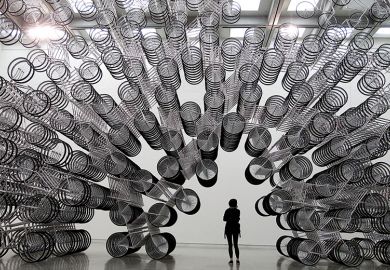What a shrivelled walnut of a concept feminism is reduced to in this compilation of alternative women's media groups. Carolyn Byerly and Karen Ross even apologise for using the term at all, for fear of appearing too white, middle class and heterosexual. And that same sniff of disapproval permeates the whole book.
In the introductory survey of mainstream media, for example, Charlie's Angels are reviled as too fluffy, Cagney and Lacey as too masculine. Buffy is too pretty, while Xena is not lesbian enough, despite the boots and brass bra. Glaring omissions support the blanket condemnation. When criticising soaps and sitcoms for their lack of gay female characters, for example, the authors ignore obvious examples such as ER 's Dr Weaver and Carol and Susan's happy marriage in Friends . Halle Berry's Oscar does not feature when Hollywood is castigated for its dearth of black actresses. Women's magazines are dismissed as purveyors of stereotypes, with no acknowledgement of their differences. Nor is there any serious analysis of the press. So Rebekah Wade, editor of The Sun , is criticised for not removing Page 3 pin-ups without any suggestion of the context in which she is operating.
Still, at least Wade gets a namecheck. Even though this study claims to include women who have successfully entered the dominant media, no other female newspaper editors are mentioned, nor any of the increasingly numerous senior women in British broadcasting. Instead, in their UK coverage the authors interview a couple of feminist activists operating in a tiny milieu, ignoring major journalists and programmes and even eschewing the one mainstream outlet that has for 60 years given daily voice to women.
Maybe BBC Radio 4's Woman's Hour , where I was editor for several years, is just too celebratory, inclusive and unjudgmental to count.
Given that the British landscape is presented so inadequately, it is hard to gauge the accuracy of the rest of the study, which concentrates on women activists across the world. The comparative scales of their struggles are not seriously addressed because there is no analysis of the role and scope of the media in vastly different cultures.
The documenting of women's pressure groups and their campaigns, gathered through more than 200 interviews, is useful and in some ways ground-breaking. But serious consideration of the media's continuing bias is undermined by the authors' prejudices, omissions, errors and woeful naivety.
Sally Feldman is dean of media, arts and design at Westminster University.
Women and Media: A Critical Introduction
Author - Carolyn M. Byerly and Karen Ross
Publisher - Blackwell
Pages - 304
Price - £50.00 and £17.99
ISBN - 1 4051 1606 4 and 1607 2



